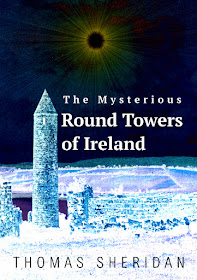Saint Patrick’s life story and deeds were an invention by a Gaelic Irish Bishop and anchorite (hermit) named Áed of Sletty, who in the 7th century decided that Irish Christianity badly needed an evangelist saint so as to neatly solidify the conversion of Ireland to Christianity within the life story of heroic figure. Áed of Sletty commissioned Muirchú moccu Machtheni—a monk and also (laughably, it must be pointed out) a historian—to invent Saint Patrick hundreds of years after his supposed existence. If this evidence of Saint Patrick’s existence lacks credibility, the story gets even more bizarre when we factor in that Muirchú moccu Machtheni’s Vita Sancti Patricii (History of Saint Patrick) survives in four copies, all of which are incomplete—with some being mere fragments—dating from the 8th and 11th centuries. None of which appear to have been written in Ireland.
The reason for this invention of Saint Patrick is almost certainly to cover the possible violent (or at the very least, intolerant) nature of the actual story of early Christianity in Ireland—mirroring the same experience on the continent—in order to create a new fictional, and highly-sanitized history.
While many would point out, that all over Ireland there are endless stories of Saint Patrick being here and there. These are nothing more than local folklore, or religious scriptures written hundreds of years after his alleged existence. Irish folklore is also filled with numerous references to ‘giants’, and yet this has no less validity—in terms of being authenticated—than the records of Saint Patrick and his mission in Ireland.
What if this ‘Saint Patrick’ (entity) was being phrased in the same manner in which we tend to state that ‘Hitler’ invaded Poland, ‘Gehnis Kahn’ sacked Zhongdu, or ‘Bush’ invaded Iraq? The name of a cult of personality—who in the case of Saint Patrick, may or may not be an actual individual(s)—representing the figurehead (or branding) of a movement or conquest, rather than army or nation involved?
Yet even within the—benignly presented, as well as culturally entrenched—tales of Saint Patrick’s evangelical mission to Ireland, the classic Christian history of extreme intolerance and bigotry—towards Pagan indigenous tribes and their gods—still comes to the fore. Stories of Pagan shines being burnt, demolished and desecrated abound. Presented with the official history as if these acts of bigoted violence are somehow to be considered a positive development.
What the early Christian missionaries to Ireland (as with the rest of Pagan Europe) could not—or for whatever pragmatic reason, would not—destroy, they re-branded as part of their new Christian spiritual infrastructure. From sacred druid wells—which were renamed ‘Holy Wells’—to the swastika of the Pagan goddess Brid becoming the Saint Bridget’s Cross. The Round Towers of Ireland likewise became Christian towers. Even if there is not one single account of the commissioning or building of the towers in any ancient record or manuscript.
As for the Pagan people of Ireland themselves—prior to the arrival of Christian monks to save them from Jehovah’s lakes of fire—the policy was to dehumanize them, as well as mock whatever infrastructure the new faith has no use for. Again, this was not unique to Ireland, as iconoclasts and later ‘stone killers’ spent over a thousand years and more attacking any spiritual infrastructure that was Pagan in origin. While reducing the humans who built them to animal skin wearing troglodytes.
Thomas Sheridan is the author of The Druid Code: Magic, Megaliths and Mythology. AVAILABLE HERE.
COMING SOON NEW BOOK - Sorcery: The Ivocation of Strangeness






CROOOOOOOOOM!!.
ReplyDelete